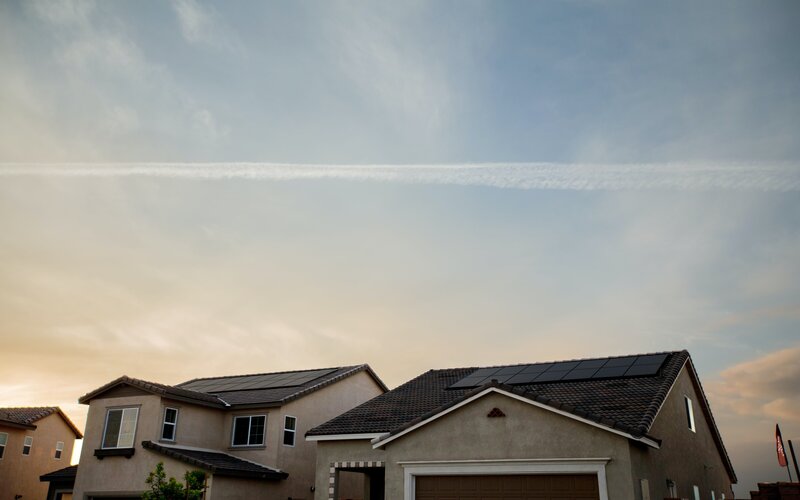On an annual basis, values tracked 2.3% higher over 2019, with five of the eight capital cities and five of the seven 'rest-of-state' regions seeing the year in positive growth territory, according to the latest figures from CoreLogic.
Sydney and Melbourne led the strong growth, with both capitals posting a 5.3% rise in values over the year, while values were down in Darwin by 9.7%, 6.8% lower in Perth and 0.2% lower in Adelaide.
Regional Tasmania led the regional markets, with a 6.1% rise over the year.
CoreLogic head of research Tim Lawless said despite the mostly positive results, growth was beginning to slow.
“Although the monthly capital gains trend remains fast-paced, the 1.1% rise in December was softer relative to the 1.7% gain in November and the 1.2% rise in October," Mr Lawless said.
"This would suggest that the pace of capital gains may have been dampened by higher advertised stock levels or worsening affordability pressures through early summer.”
Dwelling values as at December 31 2019
|
|
Monthly change |
Quarterly change |
Annual change |
Median value |
|
Sydney |
1.7% |
6.2% |
5.3% |
$840,072 |
|
Melbourne |
1.4% |
6.1% |
5.3% |
$666,883 |
|
Brisbane |
0.7% |
2.4% |
0.3% |
$497,491 |
|
Adelaide |
0.5% |
1.4% |
-0.2% |
$433,845 |
|
Perth |
0.0% |
-0.1% |
-6.8% |
$437,080 |
|
Hobart |
0.2% |
3.4% |
3.9% |
$474,186 |
|
Darwin |
-0.5% |
-1.4% |
-9.7% |
$388,018 |
|
Canberra |
0.1% |
2.3% |
3.1% |
$611,841 |
|
Combined capitals |
1.2% |
4.7% |
3.0% |
$622,346 |
|
National |
1.1% |
4.0% |
2.3% |
$537,506 |
Source: Corelogic
Mr Lawless added that 2019 was a tumultuous year for the property market, influenced by a range of government and Reserve Bank decisions, as well as relaxed lending restrictions.
“The positive year-end results mask what has been a year of two distinct halves -we saw capital city dwelling values fall by 3.8% over the first six months of 2019 and then rebound by 7.0% over the second half of the year.
"The housing value rebound was spurred on by lower mortgage rates, a relaxation in borrower serviceability assessments, improved housing affordability and renewed certainty around property taxation policies post the federal election.
"Lower advertised stock levels persisted providing additional upwards pressure on prices amidst rising buyer activity.”
Despite the strong rebound over the latter half of 2019, property values across most regions are still 3.1% below the October 2017 peak.
However, if the national rate of growth continues in 2020, the housing market will record a nominal recovery in March as values push to new record highs.
“A nominal recovery in housing values implies home owners are becoming wealthier, which may also help to support household spending," Mr Lawless said.
"However, the flipside is that housing affordability is set to deteriorate even further as dwelling values outpace growth in household incomes, signaling a set-back for those saving for a deposit.”
What's the outlook for 2020?
Mr Lawless said it's unlikely we'll see the same rise in capital gains that we saw in 2019 this year, even with the expectation that mortgage rates will decrease further over the first half of the year.
“Housing values are expected to rise through 2020 across most regions, however, the year may bring about a change in the growth dynamic with the larger cities seeing a slowdown in the rapid rate of growth recorded through the second half of 2019.
"In contrast, smaller capitals such as Brisbane and Perth, as well as key regional centres and lifestyle markets could see an improvement in conditions as buyers are attracted to affordable prices coupled with job opportunities and lifestyle factors.”
Mr Lawless said the market slowdown will be especially felt in Sydney, where dwelling values were already 8.2 times higher than gross annual household incomes halfway through 2019.
However, this should be offset by increased investor activity, who will be attracted by prospects for capital gains and a positive spread between mortgage rates and rental yields.
In addition to this, advertised stock levels are likely to rise from their low base at the end of 2019, as sellers look to take advantage of the market recovery and summer selling conditions.
Higher advertised stock levels will provide more choice for buyers and remove some of the urgency from decision making process that has supported higher prices.
New high-rise apartment completions are likely to remain higher than average over the first half of 2020 as the surge in off-the-plan unit projects complete construction.
But with buyers cautious of newly built projects due to construction quality concerns, precincts with higher supply levels could face downward price pressure.
The table below displays some of the lowest-interest variable rate home loans currently available in Australia for owner-occupiers making principal and interest repayments.
| Lender | Home Loan | Interest Rate | Comparison Rate* | Monthly Repayment | Repayment type | Rate Type | Offset | Redraw | Ongoing Fees | Upfront Fees | Max LVR | Lump Sum Repayment | Extra Repayments | Split Loan Option | Tags | Features | Link | Compare | Promoted Product | Disclosure |
|---|---|---|---|---|---|---|---|---|---|---|---|---|---|---|---|---|---|---|---|---|
5.54% p.a. | 5.58% p.a. | $2,852 | Principal & Interest | Variable | $0 | $530 | 90% |
| Promoted | Disclosure | ||||||||||
5.49% p.a. | 5.40% p.a. | $2,836 | Principal & Interest | Variable | $0 | $0 | 80% |
| Promoted | Disclosure | ||||||||||
5.64% p.a. | 5.89% p.a. | $2,883 | Principal & Interest | Variable | $250 | $250 | 60% |
| Promoted | Disclosure | ||||||||||
5.64% p.a. | 5.89% p.a. | $2,883 | Principal & Interest | Variable | $248 | $350 | 60% |
|

Ready, Set, Buy!
Learn everything you need to know about buying property – from choosing the right property and home loan, to the purchasing process, tips to save money and more!
With bonus Q&A sheet and Crossword!







 Bernadette Lunas
Bernadette Lunas
 Denise Raward
Denise Raward
 Harry O'Sullivan
Harry O'Sullivan
 Rachel Horan
Rachel Horan
 Brooke Cooper
Brooke Cooper

